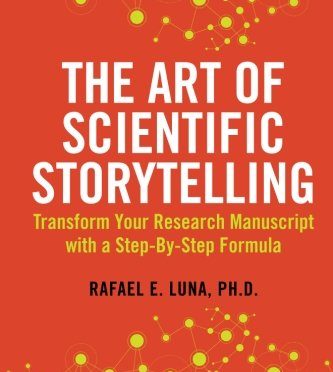Hi, Sackler! I’m a fourth year student in CMDB who is terrified of the fact that she just called herself a Fourth Year. Like some of you out there, I am surprised at how quickly my time at Tufts is passing by, and I am panicking about my career and life objectives. That is why I have made the conscious decision to start attending as many PDA and GSC seminars as I can, to better understand my options and to expose myself to the people who can best explain them to me. For your benefit I will be writing up an “ICYMI” (in case you missed it), a take on what went down and what I learned that you will be able to find in this newsletter. My first piece recaps a seminar hosted by the Tufts PDA titled “The Art of Scientific Storytelling,” given by Rafael Luna, Ph.D. Happy September, everyone!
Would The Lion King still be as exciting if Scar weren’t in the picture? How about if “the circle of life” weren’t really critical to survival in sub-Saharan Africa? Pride rock would be meaningless and Simba would have nothing to fight for, right?
Fortunately for all you kids of the 90’s who like to occasionally belt out a little song called “Can You Feel the Love Tonight,” Walt Disney’s classic film incorporates a dire antagonist to challenge Simba and thus creates stakes to fight for, making The Lion King the compelling tale we know and love.
On August 18th, Rafael Luna, Ph.D. came to Tufts to talk about how basic storytelling elements—a protagonist, antagonist, conflict, scene, resolution, and stakes—make not only for a great Disney plotline but also an impactful and powerful title for a scientific manuscript. Dr. Luna is a biomedical research fellow at Harvard who has applied this method to the design of dozens of his own manuscripts, as well as those of his clients and collaborators. He explained that, by weaving together the above listed elements, you not only construct a more informative and intriguing title, but you also inform the structure and progression of your manuscript’s contents.
Dr. Luna began his seminar by having the attendees name all the specific storytelling elements from The Lion King: the protagonist = Simba, antagonist (or a secondary, supporting role) = Scar, conflict = regency, scene = Africa, resolution = reclaims, stakes (i.e. research impact) = the circle of life. No matter how you combine these characters and themes, you are able to wholly summarize the story. For example: “Simba defeats Scar in a battle for regency in Africa and reclaims the circle of life.” Or: “The circle of life in Africa is reclaimed by Simba as he defeats Scar in the battle for regency.” The possibilities go on and on.
Having established this, we moved on from cartoons to something slightly more relevant to our purposes, like Dr. Luna’s 2012 Cell Reports publication, C-terminal domain of eukaryotic initiation factor 5 promotes start codon recognition by its dynamic interplay with eIF1 and eIF2β. This title prepares us for a story that is primarily about the “protagonist,” C-terminal of eIF5, supported by the “antagonists” eIF1 and eIF2β. The “scene” is set at the start codon, and the “stakes” are start codon recognition. Finally, dynamic interplay summarizes the “conflict,” and we find ourselves with a complete and all-encompassing title. Throughout the seminar, we continued to analyze several other manuscript titles in order to identify how they were successful and how they could be improved.
The manner in which the title is structured can also help determine how the rest of the manuscript is written. If, for example, you are researching how a drug interacts with a certain protein, you can either structure your title such that the drug is the protagonist and the protein is the antagonist, or vice-versa. Depending on your findings, one should make more sense than the other. The implications go even further, since whether the drug or the protein plays the protagonist determines if your paper should be submitted to Nature Pharmacology or Nature Biochemistry.
Incredibly, Dr. Luna’s method is a tool with which any story can be titled and thus, organized. In just one hour, he provided us with a technique to help create accurate, informative, and complete titles. From there on out, it’s hakuna matata: no worries, for the rest of your days…
If you’re interested in learning more about Dr. Luna’s method, his book The Art of Scientific Storytelling is available for purchase on Amazon.com!

